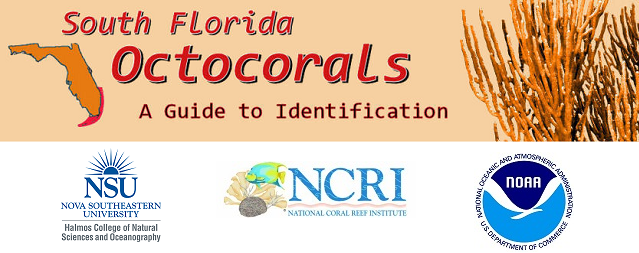Preview

Family
Gorgoniidae
Common Name(s)
Bipinnate sea plume
Colony Form
Pinnate, plumose, usually monoplanar; branches arising from main stem often branch themselves; to 1.5 m tall but usually <1 >m.
Axis
Somewhat flattened in plane of branching along main stem, longitudinally striated, brown; very slender and paler on secondary branches and pinnules.
Branches
Pinnules rather stiff, blunt, somewhat flattened, 1.0-1.5 mm wide, 25-40 mm long, paired on opposite sides of branch, widely and regularly spaced 4-8 mm (usually ~5 mm) apart, arising at an angle of 60-70º to branch axis; longer pinnules may bear pinnules themselves.
Apertures
Slit-like and flush, usually in alternating double row on each side of pinnule.
Mucus
None
Color
Purple, sometimes yellow or whitish; dries or preserves pale or deep purple, reddish purple, dull pinkish, grayish purple, or yellow.
Sclerites
Polyp armature: large flat colorless rods with scalloped edges, 0.07-0.14 mm long, arranged “en chevron” in tentacle bases. Outer layer: scaphoids (curved sclerites) to 0.18 mm long, with belts of tubercles on convex profile fused as collars taller than unfused tubercles on concave side; spindles to 0.2 mm long. Inner layer: slender spindles only. Clear purple, pale yellow or colorless.
Habitat
On reefs at depths of 6 m probably to 27 m, most commonly in 9-20 m.
Distribution
Bahamas, South Florida, and Caribbean Sea.
Similar Species
Date Taken
4-11-2016



Notes
Similar to A. elisabethae but pinnules thinner, more closely spaced and always paired. Williams and Chen (2012) transferred all Western Atlantic species of Pseudopterogorgia to the genus Antillogorgia.